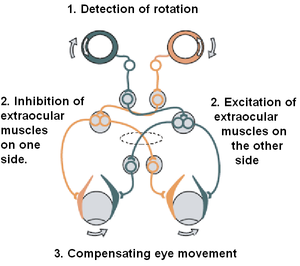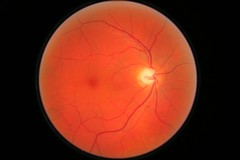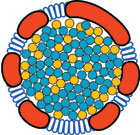The Wall Street Journal "Health Blog" reported that the Centers for Medicare & Medicaid Services (CMS) appears late yesterday to have changed its mind about reimbursement for small amounts of Avastin [bevacizumab], which physicians use to treat patients with age-related macular degeneration (AMD).
Avastin, which is similar to Lucentis [ranibizumab], is used off-label to manage AMD, but unlike Lucentis, which costs approximately $2,000 per injection, Avastin costs only about $30 per injection, making it considerably cheaper. Late yesterday, however, CMS announced without explanation that as of Jan. 1, it will reverse its Oct. 1 decision to reimburse Avastin at approximately $7 per dose, and will return to its previous higher reimbursement for the drug.
 8:57 AM
8:57 AM
 Keshav Bhat
Keshav Bhat

![Reblog this post [with Zemanta]](http://img.zemanta.com/reblog_e.png?x-id=d0d0dcc1-bd82-4f99-8882-8f6eff897131)
![Reblog this post [with Zemanta]](http://img.zemanta.com/reblog_e.png?x-id=7c13c1e1-5545-4956-b6e1-ae82f266a104)
![Reblog this post [with Zemanta]](http://img.zemanta.com/reblog_e.png?x-id=017c5678-ae5c-4b82-b232-57fd20353006)


![Reblog this post [with Zemanta]](http://img.zemanta.com/reblog_e.png?x-id=03e72e0f-5125-4c17-9483-bcbbfdb5015d)
![Reblog this post [with Zemanta]](http://img.zemanta.com/reblog_e.png?x-id=5c69eaa1-f476-482e-9fcd-537a10d4b5c4)

![Reblog this post [with Zemanta]](http://img.zemanta.com/reblog_e.png?x-id=49333503-179f-4584-bfa4-708acf7792c5)

![Reblog this post [with Zemanta]](http://img.zemanta.com/reblog_e.png?x-id=384901cd-b733-4ebd-a37d-3353932b7038)

![Reblog this post [with Zemanta]](http://img.zemanta.com/reblog_e.png?x-id=11bdc177-520e-42c6-977b-94c324bb21dd)

![Reblog this post [with Zemanta]](http://img.zemanta.com/reblog_e.png?x-id=ed66092f-302d-4eca-8b66-547f9c4117b7)

![Reblog this post [with Zemanta]](http://img.zemanta.com/reblog_e.png?x-id=0d141bb9-3717-453e-83bc-5204210f0f4a)
![Reblog this post [with Zemanta]](http://img.zemanta.com/reblog_e.png?x-id=4ab6744d-6d4c-424e-9bae-2b608a2614a2)
![Reblog this post [with Zemanta]](http://img.zemanta.com/reblog_e.png?x-id=e6c9c4b8-1172-4309-9d85-e5a12094ed7d)

![Reblog this post [with Zemanta]](http://img.zemanta.com/reblog_e.png?x-id=1d167533-c482-4d68-8d2a-728e9704089a)


![Reblog this post [with Zemanta]](http://img.zemanta.com/reblog_e.png?x-id=8eb30069-4167-4b20-96e9-f880ad34d366)

![Reblog this post [with Zemanta]](http://img.zemanta.com/reblog_e.png?x-id=57a15bc5-1fba-4aaf-b412-3f5bbbe86abb)

![Reblog this post [with Zemanta]](http://img.zemanta.com/reblog_e.png?x-id=ab5b0f9a-3879-4317-9b32-8d73284308ff)

![Reblog this post [with Zemanta]](http://img.zemanta.com/reblog_e.png?x-id=079d7b05-db1f-4f9e-be96-a1fa89363f08)



